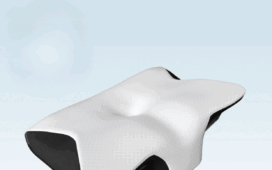The past decade has transformed the landscape of drug development, with mRNA technology taking center stage. From life-saving vaccines to novel therapeutics in oncology and rare diseases, messenger RNA has proven its potential to reshape modern medicine. Yet, the true success of this innovation does not rest on mRNA alone; it depends on the precision of LNP formulation that enables safe, effective delivery into the human body.
Why Drug Delivery Matters in mRNA Therapeutics
mRNA molecules are powerful but fragile. Left unprotected, they degrade rapidly in the body and fail to reach their target cells. This is where mRNA lipid nanoparticles come into play. These nanoscale carriers encapsulate mRNA, shielding it from degradation, enhancing stability, and ensuring that the payload reaches its intended cellular destination.
By acting as both a protector and a delivery vehicle, lipid nanoparticles have become the backbone of modern mRNA therapeutics. Without them, the breakthrough potential of mRNA would remain locked in research labs instead of reaching patients worldwide.
The Role of LNP Formulation in Precision Delivery
The effectiveness of an mRNA-based drug depends largely on how its lipid nanoparticle carrier is designed. A carefully engineered LNP formulation can:
- Optimize stability of the fragile mRNA strand.
- Facilitate cellular uptake by merging with the lipid bilayer of cells.
- Control release kinetics, ensuring mRNA is delivered at the right place and time.
- Enhance safety, reducing risks of toxicity or immune overreaction.
Each of these factors underscores why LNP formulation is not just a supporting technology, but the driving force behind successful mRNA therapies.
Advances in mRNA Lipid Nanoparticles
Since their early use in vaccines, mRNA lipid nanoparticles have evolved rapidly. Modern formulations are highly customizable, with researchers’ fine-tuning lipid ratios, particle size, and surface modifications to meet specific therapeutic needs. Some advancements include:
- Ionizable lipids that improve mRNA encapsulation and reduce toxicity.
- PEGylation techniques enhance nanoparticle stability in the bloodstream.
- Targeting ligands that direct nanoparticles to specific tissues or organs.
These innovations are pushing mRNA therapies beyond infectious diseases into areas like oncology, cardiovascular health, and regenerative medicine.
Applications Beyond Vaccines
While vaccines put mRNA technology on the global map, its applications extend far further. For example:
- Cancer immunotherapy – Custom mRNA strands can train the immune system to target tumor cells, with mRNA lipid nanoparticles delivering the instructions precisely where needed.
- Protein replacement therapies – Instead of introducing proteins externally, mRNA can direct the body to produce them naturally, with LNPs ensuring the message is delivered.
- Gene editing tools – Technologies like CRISPR rely on precise delivery of editing machinery, where LNP formulation provides a safe and efficient pathway.
Each of these applications demonstrates how advances in lipid nanoparticle design are unlocking entirely new frontiers in medicine.
Overcoming Challenges in LNP Formulation
Despite remarkable progress, challenges remain in perfecting LNP formulation for broader use. Key hurdles include:
- Immune responses – Ensuring nanoparticles do not trigger unwanted inflammation.
- Scalability – Developing reproducible processes that move smoothly from lab scale to commercial production.
- Targeted delivery – Enhancing specificity so that therapies act only where needed, minimizing side effects.
Ongoing research and collaboration between pharmaceutical scientists, chemical engineers, and biotech innovators are gradually overcoming these barriers.
The Future of Precision Nanomedicine
As the biotech industry looks ahead, the role of mRNA lipid nanoparticles will only grow significantly. Next-generation systems are expected to feature:
- Smarter targeting using tissue-specific ligands.
- Biodegradable materials minimize long-term risks.
- Personalized formulations tailored to patient-specific needs.
- Integration with AI-driven design, where machine learning helps optimize formulations faster.
This convergence of biology, chemistry, and data science signals an exciting future where LNP formulation will be central to making medicine more precise, accessible, and patient-friendly.
Final Thoughts
The promise of mRNA is inseparable from the success of its delivery system. Through precision lipid nanoparticle formulation (LNP formulation), fragile strands of genetic code are transformed into powerful therapies capable of addressing some of humanity’s toughest health challenges.
As research accelerates and applications broaden, mRNA lipid nanoparticles will continue to redefine drug delivery—ushering in a new era of nanomedicine where treatments are not only more effective but also safer and more personalized. The future of medicine is being built at the nanoscale, and lipid nanoparticle innovation is leading the way.











